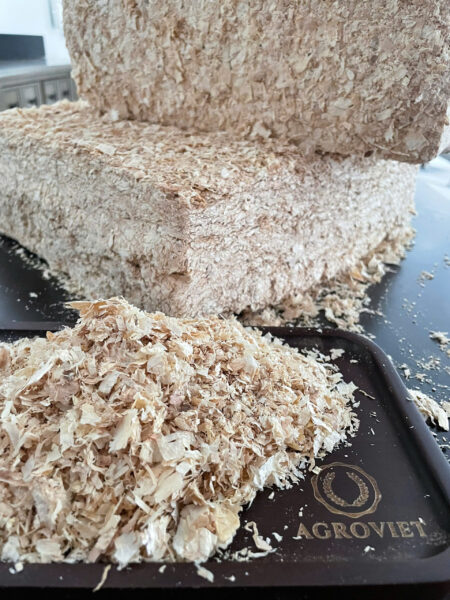 Pine wood shavings are a popular choice for chicken coops, providing an affordable, sustainable, and effective bedding option. Whether you’re a backyard chicken enthusiast or a small farm operator, keeping your chicken coop clean, dry, and odor-free is essential for the health and well-being of your birds.
Pine wood shavings are a popular choice for chicken coops, providing an affordable, sustainable, and effective bedding option. Whether you’re a backyard chicken enthusiast or a small farm operator, keeping your chicken coop clean, dry, and odor-free is essential for the health and well-being of your birds.
In this guide, we’ll explore the advantages of using pine wood shavings in chicken coops, what you need to know about their use, and how to maximize their benefits for your flock.
Read more: https://www.nederman.com/en/knowledge-center/how-does-a-wood-dust-extraction-system-work
Why Pine Wood Shavings Are Ideal for Chicken Coops
1. High Absorbency
One of the main reasons why pine wood shavings are such a popular choice for chicken coops is their excellent absorbency. Chicken coops tend to get messy quickly due to droppings and spilled water. Pine shavings soak up moisture effectively, keeping the coop dry and preventing the buildup of odors and harmful bacteria.
2. Odor Control
Chickens produce a lot of waste, and without proper bedding, coops can quickly become smelly. Pine shavings naturally help control odors, thanks to their ability to absorb moisture and neutralize ammonia from droppings. The fresh pine scent also contributes to a more pleasant environment in the coop.
3. Comfort and Warmth
Chickens need comfortable bedding that provides cushioning and insulation, especially during colder months. Pine wood shavings offer a soft and cozy surface for chickens to rest on. The shavings also help retain heat, keeping the coop warm and comfortable for your flock.
4. Cost-Effective
Pine shavings are generally affordable and widely available, making them a cost-effective choice for coop bedding. Since they are long-lasting and require fewer changes than some other materials, they also save time and money in the long run.
5. Eco-Friendly and Biodegradable
As a natural product, pine wood shavings are environmentally friendly. After use, they can be composted, reducing waste and providing rich material for gardens and farms. This makes them a sustainable choice for poultry keepers who care about their environmental impact.
Best Practices for Using Pine Wood Shavings in Chicken Coops
1. Layering the Bedding
To get the most out of pine wood shavings, it’s important to apply them correctly. Start with a thick layer of shavings on the coop floor—usually around 4 to 6 inches deep. This depth allows the shavings to absorb moisture and provide enough insulation for your chickens. In colder climates, you may want to add even more shavings for additional warmth.
2. Regular Maintenance
While pine shavings are excellent at absorbing moisture and controlling odors, regular maintenance is still essential. Plan to clean out and replace soiled shavings every week or two, depending on the size of your coop and the number of chickens. Regularly turning and fluffing the bedding can also help keep it dry and extend its lifespan.
3. Spot Cleaning
In between full bedding changes, spot cleaning can help maintain a clean and healthy coop. Remove any areas of particularly soiled or wet bedding and replace them with fresh pine wood shavings. This simple step helps prevent odors and keeps the coop more hygienic.
4. Deep Litter Method
For those looking to cut down on coop cleaning time, the deep litter method is an option to consider. This technique involves allowing the bedding to break down naturally over time, with only occasional additions of fresh shavings. The composting action helps generate warmth and creates a natural fertilizer. With proper management, you may only need to clean out the coop once or twice a year using this method.
5. Ensure Proper Ventilation
Good ventilation is key to maintaining a dry and odor-free coop. Ensure that your coop has adequate airflow, especially if using the deep litter method. Proper ventilation allows moisture to escape, preventing mold, mildew, and ammonia buildup, all of which can be harmful to chickens.
Pine Wood Shavings vs. Other Bedding Materials
When it comes to bedding options for chicken coops, pine wood shavings stand out for their effectiveness and versatility. However, there are other materials commonly used in coops. Here’s how pine wood shavings compare:
1. Pine Wood Shavings vs. Straw
Straw is another common bedding material, but it doesn’t absorb moisture as effectively as pine wood shavings. Straw can become damp quickly, leading to a higher risk of mold and odors. Additionally, straw is more likely to harbor pests like mites and can be harder to clean.
2. Pine Wood Shavings vs. Sand
Some chicken keepers use sand as bedding, which can be effective for controlling moisture and odors. However, sand doesn’t provide the same level of cushioning and warmth as pine wood shavings. In colder climates, pine wood shavings offer better insulation for the coop.
3. Pine Wood Shavings vs. Hay
Hay is often used for nest boxes but is less suitable as bedding because it tends to mat down and become damp quickly. Pine wood shavings remain fluffier and more absorbent, making them a superior choice for the coop floor.
Read more: https://vietnambestwood.com/general/using-pine-wood-shavings-reduces-dust/
